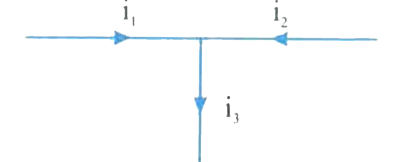x1=5sinωt
x2=5sin(ωt+53∘)
x3=−10cosωt
Find amplitude of resultant SHM.
Video Solution
Text Solution
x1=5sinωt
x2=5sin(ωt+53∘)
x3=−10cosωt
we can write x3=10sin(ωt+270∘)
Finding the resultant amplitude by vactor notation.

Resultant Amplitude |R|=√82+62=10 Ans.
|
Updated on:21/07/2023
Topper's Solved these Questions
- BOOK - RESONANCECHAPTER - SIMPLE HARMONIC MOTION EXERCISE - Board Level Exercise24videos
SIMPLE HARMONIC MOTION
- BOOK - RESONANCECHAPTER - SIMPLE HARMONIC MOTION EXERCISE - Exercise- 1, PART - I25videos
SIMPLE HARMONIC MOTION
- BOOK - RESONANCECHAPTER - SIMPLE HARMONIC MOTION EXERCISE - Advanced Level Problems13videos
SIMPLE HARMONIC MOTION
- BOOK - RESONANCECHAPTER - SEMICONDUCTORSEXERCISE - Exercise 388videos
SEMICONDUCTORS
- BOOK - RESONANCECHAPTER - TEST PAPERSEXERCISE - FST-330videos
TEST PAPERS
Similar Questions
Knowledge Check
- Question 1 - Select One
Find the resultant amplitude of the following simple harmonic equations :
x1=5sinωt
x2=5sin(ωt+53∘)
x3=−10cosωtA5B10C15D20 - Question 2 - Select One
If i1=3sinωtand(i2)=4cosωt, then (i3) is
 A5sin(ωt+53∘)B5sin(ωt+37∘)C5sin(ωt+45∘)D5sin(ωt+35∘)
A5sin(ωt+53∘)B5sin(ωt+37∘)C5sin(ωt+45∘)D5sin(ωt+35∘)
x1=5sin(ωt+30∘)
x2=10cos(ωt)
Find amplitude of resultant SHM.View SolutionThree light waves combine at a certain point where thcir electric field components are
E1=E0sinωt,
E2=E0sin(ωt+60∘),
E3=E0sin(ωt−30∘).
Find their resultant component E(t) at that point.View Solutionx1=3sinωt,x_(2) = 4 cos omega t
Find (i) amplitude of resultant SHM, (ii) equation of the resultant SHM.View SolutionIf i1=3sinωt and i2=6cosωt, then i3 is
 View Solution
View Solutionx1=3sinωt,x2=4cos'ωt Find (i) amplitude of resultant SHM. (ii) equation of the resultant SHM.
View Solutionx1=3sinωt⇒x2=4cosωt. Find (i) amplitude of resultant SHm, (ii) equation of the resultant SHm.
View Solution

